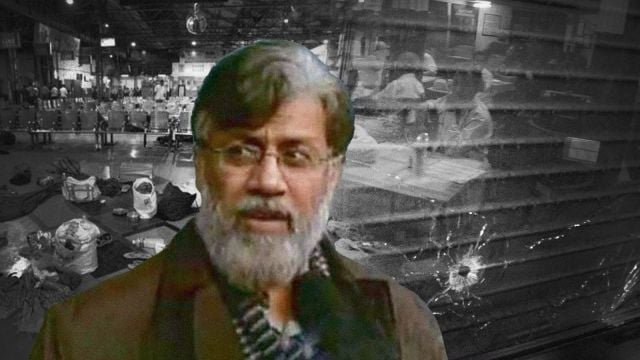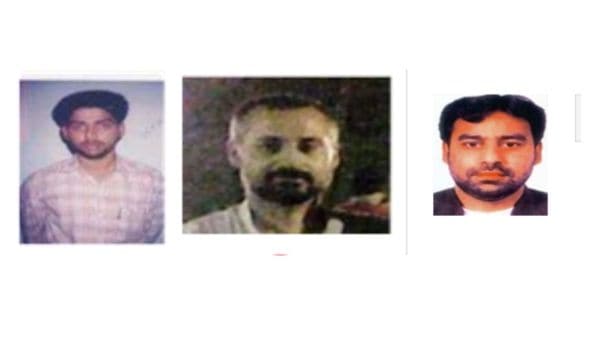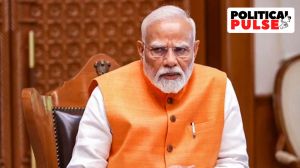Tahawwur Rana’s South India link: 2008 Bengaluru blasts, Kerala terror recruitment plot
Apart from the 26/11 Mumbai attack, extradited Tahawwur Rana, who was allegedly close to LeT leaders, could tie up loose ends in the 2008 Bengaluru serial blasts case and a Kerala terror plot.
 On the eve of the 26/11 attacks – between November 14 and November 21, 2008 – Rana undertook a four-city tour of India, (File Photo)
On the eve of the 26/11 attacks – between November 14 and November 21, 2008 – Rana undertook a four-city tour of India, (File Photo)BESIDES THE 26/11 Mumbai attacks, Tahawwur Rana’s extradition is also likely to throw light on his association with key Lashkar-e-Taiba operatives linked to terrorism in South India.
Rana is known to have been associated with a key Lashkar commander who handled operations in South India around the time of the 26/11 Mumbai attacks, including the Bengaluru serial blasts on July 25, 2008, and a terror recruitment plot in Kerala.
Since the 26/11 attacks, the uncovering of the Lashkar’s terror network by agencies in India and the US — reported through court filings in the two countries — has revealed that Rana was linked in some way to Lashkar’s top operatives behind operations in South India.
Documentary evidence from these court filings over the last 17 years points to his links to a Gulf-based Lashkar module headed by a man identified as Wali alias Rehan alias Abdul Aziz alias Rashid Abdullah — a Pakistani national who is wanted in the Bengaluru blasts case and the Kerala terror recruitment plot that was exposed after four youths were killed in an encounter in Kashmir in September 2008.
Wali, who is on the NIA’s most wanted list, was named in a 26/11 dossier given by India to Pakistan in 2010 as being part of the Lashkar training camp for terrorists behind the Mumbai attacks. According to the dossier, Wali also funded the Bengaluru blasts and arranged for the accused to take shelter in Bangladesh.

 Most wanted by the National Investigation Agency. (Express)
Most wanted by the National Investigation Agency. (Express)
A four-city tour that Rana undertook on the eve of the 26/11 attacks — between November 14 and November 21, 2008 — when he travelled to New Delhi, Kochi, Ahmedabad and Mumbai, and also advertised his services as an immigration consultant in newspapers, is suspected to have been part of activities linked to the Lashkar network in India.
Security sources said Rana would be questioned on his association with Lashkar operatives accused in the Karnataka and Kerala cases.
The South India link
Rana is primarily linked to Lashkar activities in South India through his association with a former Pakistan military operative, Abdur Rehman Hashim Syed alias Pasha, who is linked to Wali, the Lashkar commander of the Gulf-based module.
According to court filings by the FBI, Rana stayed with Pasha in Dubai in November 2008, ahead of the Mumbai attacks, and learnt about the attacks being planned.
“Rana acknowledged that he had met with ‘Pasha’ in Dubai, and that ‘Pasha’ even stayed with Rana. Rana, however, falsely denied being told by ‘Pasha’ specifically that the Mumbai attacks were about to happen,” a US attorney told a federal court after Rana’s arrest in 2009.
According to statements given to the NIA and FBI by David Coleman Headley — one of the main conspirators of the 26/11 attacks and Rana’s associate in furthering Lashkar’s global activities — Pasha was running terror operations in India with Indian recruits, parallelly to other Lashkar operations (possibly activities of ISI-linked Indian Mujahideen group).
Pasha, who is also in India’s list of most wanted persons, is accused of playing a role in the 26/11 conspiracy. An Interpol lookout notice links him to terrorist acts in India.
According to investigations by Indian agencies, the Gulf-based Lashkar module played a central role in sheltering key accused behind the Bengaluru serial blasts, and the escape to the Gulf of a key accused in the Kerala terror recruitment plot.
According to accounts provided to the Karnataka and Kerala police by a former Gulf-based Lashkar intermediary, Sarfaraz Nawaz, who was deported from Oman in February 2009 and accused by Bengaluru police in the 2008 serial blasts case, a key Lashkar meeting was held in Dubai in the first week of November 2008 to plan the escape of terror suspects wanted by the police in South India.
The Dubai meeting followed the killing of four Kerala youths in an encounter in Kashmir in September 2008, while they were allegedly on their way to a Lashkar camp for terror training, and police closing in on the suspects behind the Bengaluru serial blasts.
The four youths killed in Kashmir — Abdul Raheem, Mohammad Fayas, Mohammad Fayis and Mohammad Yasin — were suspected to have been led to Kashmir by a still-wanted Lashkar Kerala operative K P Sabir alias Ayub, after they allegedly participated in the Bengaluru serial blasts, allegedly executed by another Kerala recruit, Tadiyandavede Nasir, and Sarfaraz Nawaz.
According to the account provided by Sarfaraz Nawaz after his arrest in February 2009, the Dubai meeting was held on Wali’s instructions “to shift Nasir and his associates to Bangladesh’’.
Nasir and his brother-in-law Mohammed Shafas, who is a co-accused in the Bengaluru blasts case, reached Bangladesh via West Bengal and were allegedly sheltered by a Lashkar operative, Mubashir Syed, who was part of the Bangladesh Lashkar network of Pasha and Wali. Syed is also an accused in the Bengaluru serial blasts case.
Nasir and Shafas were picked up by Bangladesh authorities in November 2009 — shortly after the arrest in the US of Headley and Rana in October 2009 — and handed over to Indian authorities.
His visit to Kochi ahead of 26/11
While Rana is remotely linked to the Lashkar module behind the Bengaluru serial blasts, there is a seemingly more direct link to the escape of K P Sabir, the Lashkar operative from Kerala who is accused in the 2008 terror recruitment plot.
Rana’s visit to four Indian cities in November 2008, including Kochi, overlaps with Sabir’s escape to the Gulf. Proof of Rana’s visit exists in newspaper advertisements issued for his immigration consultancy firm, First World Immigration, allegedly used as a front by Headley for reconnaissance for the 26/11 attacks.
Earlier investigations on Rana’s visit to Kochi, on November 16, 2008, did not throw up any major findings. It showed that he stayed with his wife, Samraz Rana Akhtar, at a five-star hotel and had contacts with 13 different phone numbers.
The NIA’s investigation into the Lashkar recruitment plot, however, revealed that Sabir, the key accused, fled India via Mumbai on a forged passport on November 21, 2008. According to the NIA, Sabir used the forged passport of a Kerala man identified as Shameer Ali Kutty, who worked as a daily wager. Ali Kutty’s credentials were also reportedly used by Nasir, the key accused in the Bengaluru serial blasts case, to procure a SIM card.
During investigations, Ali Kutty told police that he had lost his passport in 2003. Police suspect this passport was used by the Lashkar operatives.
It is suspected that Sabir’s escape from India was facilitated by Wali, who has been named by the NIA as an accused in the terror recruitment plot. Sabir is reported to be living in Pakistan, according to information obtained by security agencies from K A Anoop, one of his associates who was deported from the UAE in 2016.
According to NIA investigations, Sabir took five youths to Kashmir in September 2008 and handed them over to a Lashkar operative for terror training. Four of the youths were later killed in an encounter with security forces. While the fifth, Abdul Jabbar, escaped, he was later arrested by Kerala police, leading to the unraveling of Lashkar’s activities in South India.
Must Read



Buzzing Now
May 01: Latest News
- 01
- 02
- 03
- 04
- 05






















